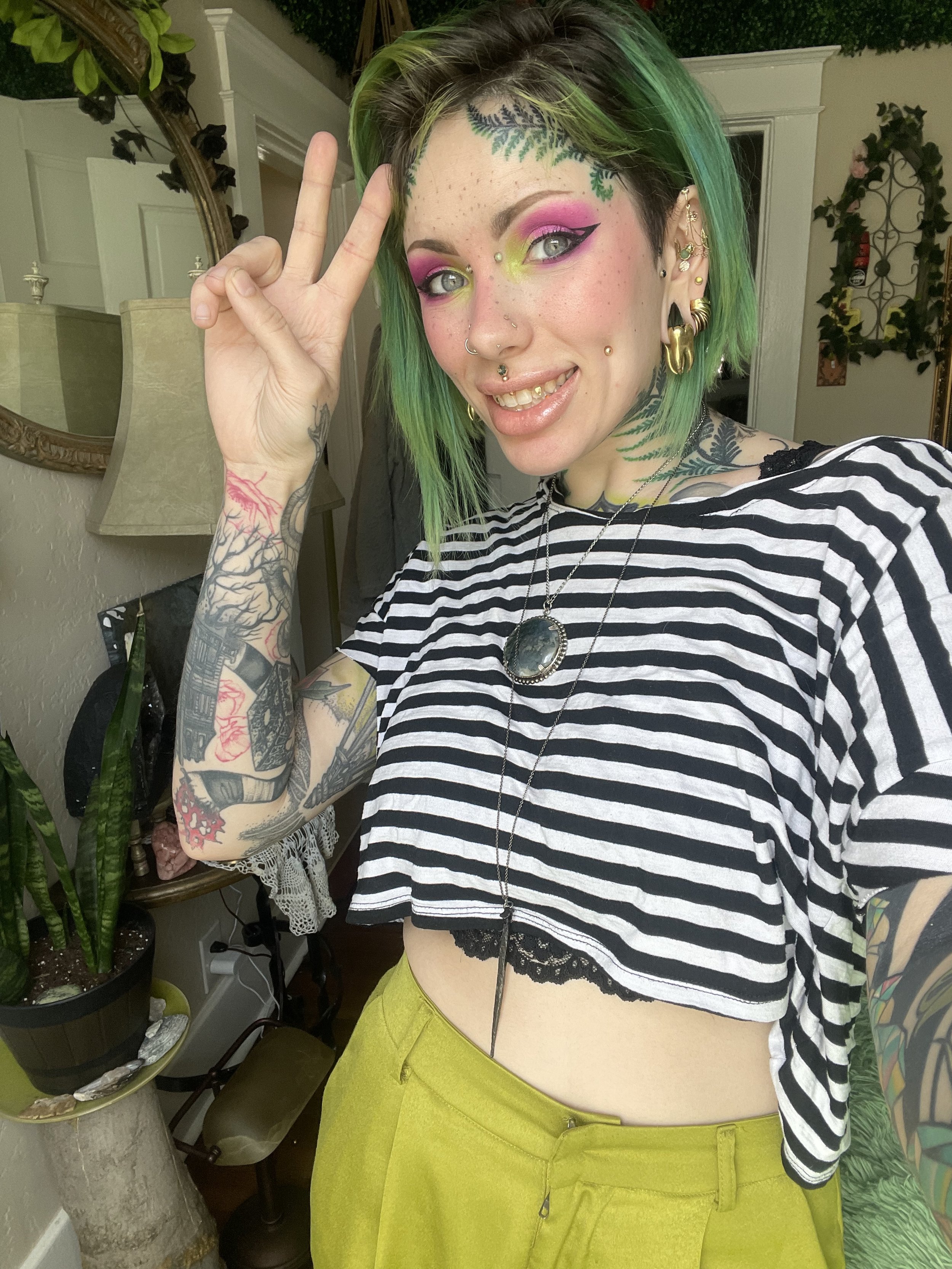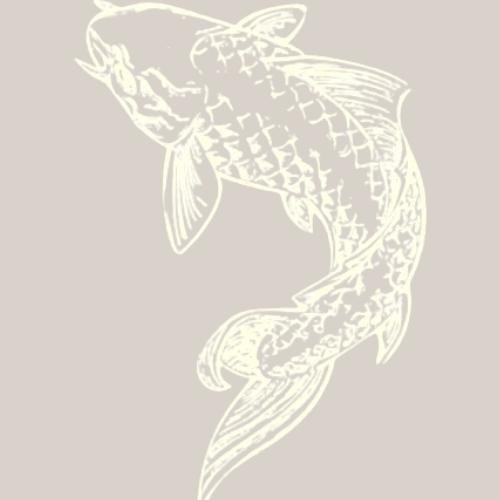Aftercare and Common Questions
-
That is an old wives tale, do not twist, pull, push, or play with your piercings.
We recommend leaving it alone!
-
-Wash your hands, thoroughly.
-Best way to clean your piercing is letting water run over the piercing to clear any crust buildup. In instances where you can’t rinse it with water, we recommend sterile saline and rinse again with water.
-
Cleaning your piercing should be as needed, not routinely.
We see folks overclean their piercings all the time, it can cause irritations which can prolong your healing.
-
Call us or reach out to your piercer via the text number on their cards they gave to you during your visit.
Please remember, our piercers are humans with lives outside of the studio if it takes some time to respond please be patient. If you are experiencing a piercing emergency, please call the studio or come in!
-
-Neilmed Saline Spray
-Sterile Saline with no additives
-Water
-
-Initially: Some bleeding, localized swelling, tenderness or bruising, All piercings, especially oral piercing, require initial jewelry that is larger than the body part to allow for swelling. This initial jewelry may appear to be excessively long or large right after you receive the piercing, as there is usually no swelling yet. Be patient and wait the full amount of time your piercer recommends before “downsizing” your jewelry.
-
-It is likely that your piercing may look and feel healed long before it actually is. This is because piercings heal from the outside in. Your “initial healing period” usually only estimates the time it will take to heal the outside; in most cases it will take at least a year to heal all the way through! It is advisable to continue cleaning your piercing and let us do any jewelry changes during that time for any piercing.
-It is normal even for a healed piercing to shrink or tighten within a few minutes if removed, making reinsertion difficult or impossible; if you like your piercing, leave the jewelry in place. If your piercing does come out for any reason, in most cases we can reinsert it for you with an appointment. It is important to make it into the studio as soon as you can after a removal. Your piercing is likely to get tighter the longer it remains out.
-
-Do not panic. It is more often than not an irritation bump, not a keloid. Stop googling.
-The first thing we ask you when you call to talk to us about it is “Tell us about your aftercare” We want to know if you are cleaning your piercing, how often, with what solution. As well as if you’ve been sleeping on the piercing, if you’ve snagged it semi-recently, or have had any trauma to it. (Puppies, kids, helmets are usually menaces to healing piercings)
-***This can be for anyone but we primarily see it with kids!*** We will ask you if you have been sleeping on wet hair, if you have, stop immediately.
-
Great question!
We use a variety of options, more notably;
-Internally Threaded
-Internally Threadless
-CBR/FBR
-Hinge rings with a design
-Seam rings with a design
Everything we use for initial piercings will be one of the following materials, ASTM Implant Grade Titanium (ASTM F-136 or F-1295) 14-18k Solid gold, ASTM Stainless Steel (F-138), or Niobium. Any stone item is going to have one of the following; a certified Swarovski Crystal Gem, Semi-precious, or Genuine Stone. These pieces carry a lifetime guarantee to manufacture defect.
-
-When you are pierced, the piece of jewelry we use is longer in length to accommodate swelling. This swelling can peak at 6-8 weeks after piercing, you may not notice swelling at all but it is there. Depending on the piercing, we tell you to come back to shorten the piece. If it is a stud, the backing (post) is replaced with a new one that is shorter in length. You will be given back your longer post during the appointment. If it is a ring, depending on the amount of time pierced and how it looks, we can change the ring to something smaller and thinner(if preferred) seam ring without a ball.
-To change out the jewelry to a brand new style (Example: Changing from stud to ring) we want to make sure that there has been enough time after piercing to ensure the jewelry isn’t going to cause a problem. We usually recommend no earlier than 6 months before changing to a new style of jewelry. (Each piercing is different and how you’re healing heavily affects what type of jewelry you can wear and the size of diameter of ring. If you’re wanting a snug ring, that is extremely important.)
-
-Do not touch your piercing at all. If your jewelry needs tightening or repositioning, wash your hands thoroughly and clean any crusted material off of your skin and jewelry first. It is not necessary or advisable to spin, twist, or rotate your jewelry during healing.
-Stay healthy; Drink water, eat food, and get good sleep.
-Are you feeling stressed? Stress can also affect a piercing, so take a hot person walk and keep calm.
-Start with freshly cleaned bedding and change regularly.
-Showers are safer than baths because bathtubs can harbor bacteria. If you must take a bath, first clean your tub and rinse well.
-Aggressive cleaning will only slow down or complicate your healing process and may cause unsightly irritation bumps (especially on nostril piercings), discolored or irritated skin, and migration or rejection.
-Avoid getting makeup, sprays, and lotions on or around your fresh piercing.
-During the first eight-ten weeks or so, do not submerge your piercing in bodies of water such as pools, oceans, hot tubs, lakes, or ponds.
-
Do not under any circumstance use any of the following materials on a fresh, healing, or healed piercing.
-Alcohol of any kind
-Hydrogen Peroxide
-Neosporin
-Mouthwash
-Antimicrobial wound wash or soap
-Aspirin Paste
-Tea Tree Oil
-Bactine
If you are unsure of a product, please reach out to the shop or your piercer and verify before you use that product on a piercing.
Our Piercers
-

Michelle
They/Them
-

Catarina
She/They
-

Jade
She/They
-
Bri
She/Her

